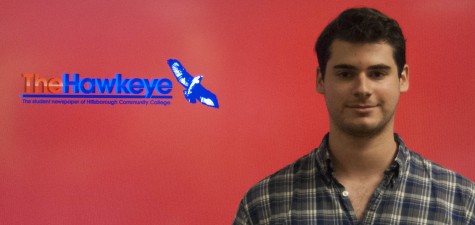Friedreich’s Ataxia: fighting for a chance
It was Sept. 6 on a sun drenched Saturday afternoon when the annual FARA Energy Ball took off in a firestorm of elegance and beauty. Some of the wealthiest and most prominent figures of Tampa converged at one event, all dressed in their finest cocktail attire and enjoying the finest of gourmet foods Tampa has to offer.
As I enter the A La Carta Pavilion to check in, I am greeted by an elegantly dressed woman welcoming patrons to the ball. Unbeknownst to me, the woman happened to be the executive director of FARA, Jennifer Farmer.
So what is FARA, and why have so many not heard of it? Farmer was kind enough to explain.
FARA stands for Friedreich’s Ataxia Research Alliance. Friedreich’s Ataxia, more commonly referred to as just FA, is a degenerative neuro-muscular disorder, for which there is currently no cure, nor Food and Drug Administration approved treatments.
FA, in its most basic definition, entails that people with the disorder experience a multitude of symptoms ranging from loss of coordination and speech, to severe fatigue and hypertrophic cardiomyopathy (enlarged heart). The disorder literally effects all muscular coordination from the tips of your toes to your fingertips. The FARA mission at the energy ball was solely to raise funding for scientific research and development in hopes of finding an effective treatment.
FARA works directly with the USF Ataxia Research Center, and with a team of brilliant research doctors, who are currently undergoing experimental trials on patients with FA. According to Jennifer, approximately one-third of the entire funding raised for FARA is through the energy ball.
I make my way carefully through the marble entrenched hallway toward the rear end of the cocktail party, a temporary guest in the atmospheres of CEOS, the Mayor and former NFL player Ronde Barber. I noticed a young man in a wheelchair, sitting next to a table toward the back end of the room, talking jovially and to a rapidly increasing, attentive audience. The young man’s name is Kyle Bryant, and he suffers from FA. But Kyle Bryant is no ordinary man. In fact, his extraordinary will power and athletic ability, despite his disease, have made him anything but ordinary.
Bryant, 32, refused to give up when he was first diagnosed with the life altering disorder. Already an avid athlete before he was officially diagnosed at 17, Kyle refuses to give up in the fight against Friedreich’s Ataxia. Once his balance and coordination had degraded to the point that riding his bicycle became too dangerous, Bryant invested in a Tricycle equipped with a bucket seat to keep his body and heart strong. It was with this simple but critical decision to stay active and not let FA consume his life that he founded rideATAXIA. An organization with six locations around the U.S., and rideATAXIA promotes awareness of FA through cycling events. In the last seven years alone, Bryant has cycled thousands of miles, and his organization has subsequently raised an unprecedented $2.5 million for FARA.
“Seek a miracle, and the impossible is nothing.” That’s the tattoo Sam Bridgman has inked across his wrist. It’s also the tattoo his brother, father and his mother have. Bridgman is another young man with FA, and if there’s one thing that shines through his charisma and bright energetic smile, it’s his optimism.
Bridgman has lived with FA for eight years. He was diagnosed when he was 15 and has lived with it throughout high school and college. “At first it was really hard for me, I wouldn’t tell any of my friends,” he says. He explained that his first symptoms were a loss of coordination, he “would fall over a lot,” that to other people he might have appeared to be a “little drunk,” as he put it.
Bridgman’s brother was there, standing behind me as we talked. “I think it was harder for my family than it was for me, they had to watch me as I got worse,” he says. He tried the early drug trials a few years back, he said that “there’s always optimism… it helped with my fatigue level, but other than that.”
FARA has come a long way in the last few years. With an alliance with the USF Ataxia Research center, every year they are coming closer to reaching an effective treatment for FA.
Marilyn Downing, one of the founding board of directors, says everyone is “very optimistic” about the research. The “research at USF is why everyone is here,” she says. Downing’s daughter Bridget has been able to achieve more than most in her lifetime. Despite being diagnosed with FA when she was only eight, Bridget has a master’s degree and lives on her own in Buffalo, New York, and teaches kindergarten. As I left, Dowining turned to me and greeted me with a smile. “Thank you for writing about us,” but FARA is something that deserves attention.

Jacob McCaskey is a native of Tampa, Florida. He is currently a student at Hillsborough Community College pursuing his Associates in Journalism. After...

